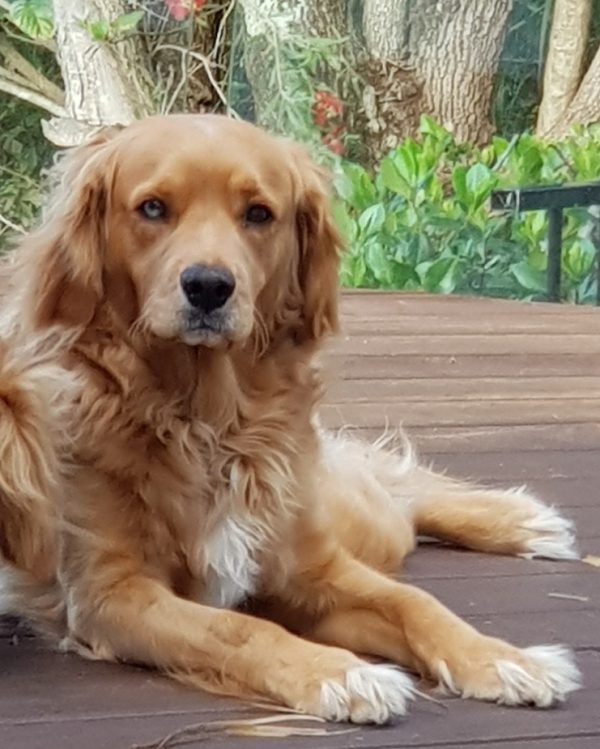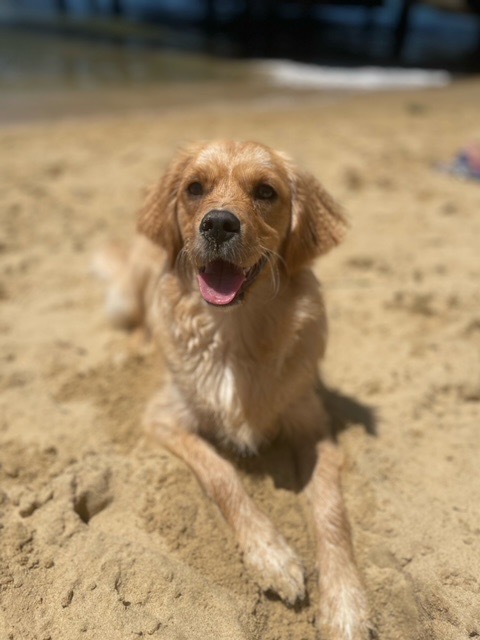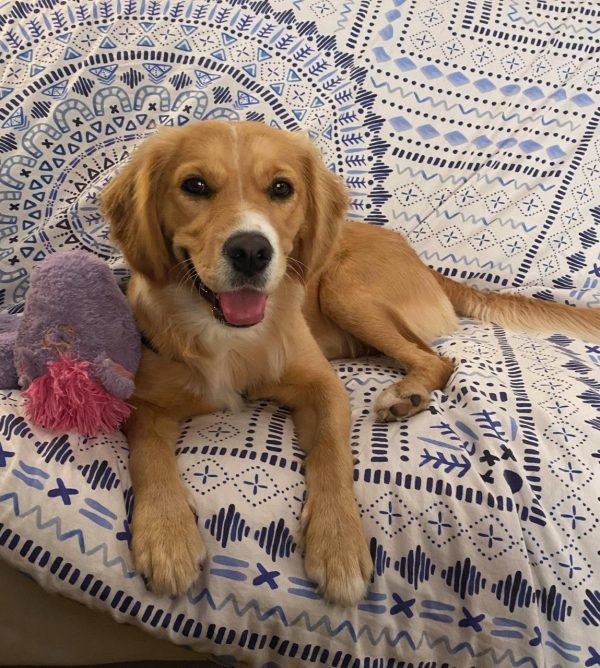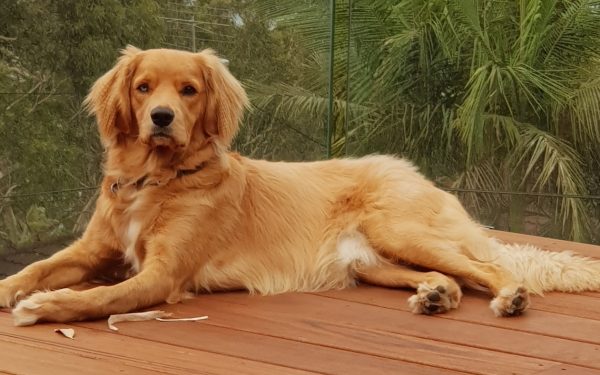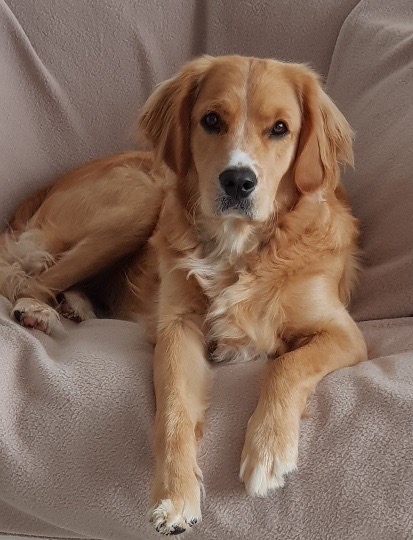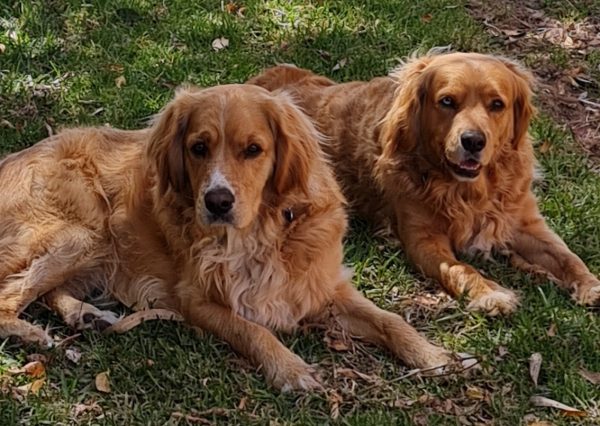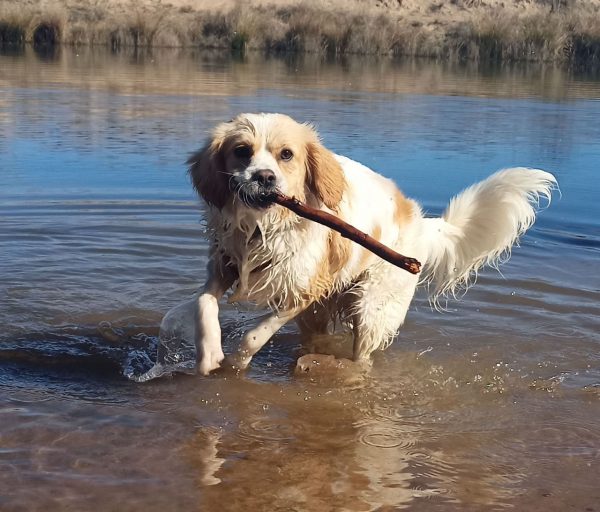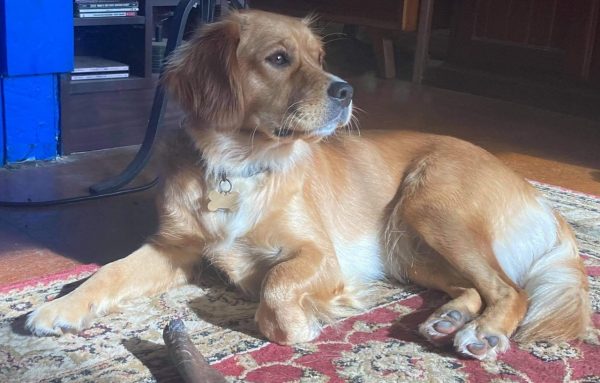What is an O’Connell Retriever?
An O’Connell Retriever is small gentle natured retriever, selected for an affectionate sweet temperament and based predominantly on crosses between Golden Retrievers X Cavalier King Charles Spaniel so they are commonly shades of gold and may have patches of white on their head or body.
The cross has also been infused with progeny from a chocolate Labrador and distantly (at least 5 generation back) from a Koolie sheepdog. This means that they can also be Black, Black and White and Silver Merle, and in the future we hope to include Chocolate colours.
Typically weighing between 14 and 22 kg (a similar size range to the Kelpie), with a flat or wavy coat, feathered legs and a feathered tail carried level with their back, they are athletic well proportioned dogs with no extreme characteristics. Their eyes are rounded but not protruding and they have a defined but not extreme “stop” and a well developed muzzle which approximately equals the length of their brain case.
If you’ve never heard of them before it is because they have only been being bred since 2015, were previously called MiniRetrievers and were only formally named O’Connell Retrievers in 2022 – so they are still very much a breed in development.
Why O’Connell Retrievers?
F1 Groodles, which I’ve been breeding since the early 2000s, are well known now to be fabulous pets. The only downside is they’re quite large dogs. Mine aren’t as big as the Standard poodle crosses (which can be the size of a small horse!) but still a bit big for most homes. My “mini Labradoodles” were a great size and was I floundering to think of a reliable cross about the same size as them.
It finally occurred to me that I could breed medium sized dogs by crossing my Cavaliers and Golden Retrievers to produce F1 mothers and then breed them to my medium sized poodles and these should be similar to a Groodle in temperament and coat type but Kelpie/Cattledog sized.
Our first mini-retriever, Maggie, was born in May 2015 to Ralph the Cavalier and Daphne the pedigreed Golden Retriever. Maggie is a much loved member of our family, now retired and living with my daughter Elle. Ralph and Daphne had another litter – Frankie, Maisie, Violet and Marley are also retired now and living with extended family and friends.
Before they retired they had many beautiful low or non shedding medium sized “Minigroodle” puppies which have proven to be everything I had hoped they’d be and are our most popular puppies.
The only problems with the F1 MiniRetrievers is that they must be bred by Artificial Insemination, so we only bred the cross occasionally to breed new mothers – so I had another idea! I decided to go against everything I have been committed to until now and try and breed on from my crossbreds to develop a new “Type” of dog. ….. Enter the O’Connell Retriever!
We now have several generations of O’Connell Retrievers. Most are typical gold coloured Retriever types – not dissimilar in size and appearance to a Nova Scotia Duck Tolling Retriever but with gentle, mild temperaments, no particular urge to go tolling ducks and maximal genetic health and diversity. (I did think of calling them O’Connell Sock Chewing Retrievers but only I would get the joke)
O’Connell Retrievers are no more than ½ Cavalier KCS but we now have a contribution from two lovely “Cavadors” so there is a touch of Labrador in some of them. This has enabled us to introduce chocolate and black genes and we also have the merle gene floating around in there from Ralph our ruby (mostly) Cavalier, and Percy, the Blenheim Cavalier, has contributed white patches.
I’m very excited by this new project and hope, before I finally shuffle off, that the O’Connell Retriever will be, if not a household name, then at least a recognisable type of medium sized Retriever with a perfect pet temperament – for people who love Golden Retrievers but want a dog that will fit comfortably in the car.
As a footnote: I would welcome interest from other breeders (who must be members of the AAPDB) who would like to become involved in the O’Connell Retriever Project. It is really not possible for one breeder to maintain the diversity needed to develop a healthy new breed.

